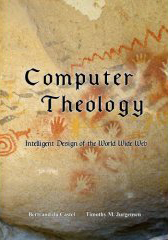PRESS
COMPUTER THEOLOGY |
||||
|
Following this verification operation of the acquired
marker, the sentinel establishes the state
of the authentication operation (for example “accepted” or “rejected”). Once
this state is established, the authentication operation is over. The departure stage allows for shutting down
this procedure and gracefully moving to the next one. We now need to consider
what uses we want to make of identity once we rigorously established it. Differential
identity of the potential participants in a transaction is a central
characteristic of policy; that is, policy may be ascribed to identities as well
as to transactions. In particular, provision of policy as an aspect of both
parties of a transaction, requiring negotiation between the two prior to a
transaction is absent from most, if not all identification systems today. In
the application of identity concepts and identification systems, it is
typically the case that the use of identity is more the purview of the receiver
of identity rather than the provider of identity. Consequently, there is
diminished concern regarding whether identifiers through which the identity of
people is ostensibly authenticated are compromised, and hence can be used by
other people to impersonate the identity of the true target of the identifiers.
Through this theft of identity, an attacker can perform any action or make any
claim that the impersonated person could perform or make if they were
physically present and participating in the transaction in question. This
obviously points out a huge problem with such identification systems and leads
one to consider at least partially alleviating this problem through the
provision of user controlled policy definition mechanisms. Specifically,
the policy through which the use of identity is established must be expanded in
law and then provided for within identification systems. That is, the ultimate
source of the policy should either be general law or it should be the result of
a negotiation between the provider and the receiver of identity on a
transaction by transaction basis. There are a wide range of issues from which
policy could be defined under the personal control of each individual with the
definition of policy itself being related to the strength of the authentication
mechanism used to establish the differential identity of a person.
Authentication protocols can range from high trust variants, perhaps requiring
a person to go to an office equipped with very secure and accurate biometric
sensors, to low trust variants, perhaps only requiring a person to present a
contactless token at a turnstile. Policy allowing for making use of varying
levels of security for entry of authentication parameters (biometrics, personal
identification numbers, etc.) allows for a variety of performance levels when
an identity token is presented as well as a variety of trust levels in the
resulting authentication. Through policy
definition, it can be specified what trust can the receiver place in materials
or services attested to by a specific authenticated identity. For example, a
person may want to disavow any trust being placed in casual e-mail messages.
Today, the perception in some circles may be that an e-mail message is akin to
a highly trusted, absolutely truthful document to which the signer attests,
under pain of liability. Other people, however, may consider e-mail to be a
highly informal mode of communication, worthy at one extreme of simply passing
along gossip. So, it should be possible for a person to establish a policy
regarding the trustworthiness of specific messages and allow the sending and
received to negotiate a well-defined policy for the sending and receiving of
messages. If one side attests only to passing along unsubstantiated gossip, and
the other side doesn’t want to hear any such gossip, then no exchange takes
place. The processes through which the interactions supported by a policy infrastructure proceed can take on a variety of forms aimed at a variety of purposes. We have just spent some effort looking at the most general of the interaction protocols, that of authentication of the entities which will engage in the interaction. After authentication, we are able to ascribe specific aspects of policy to |
||||
|
||||
© Midori Press, LLC, 2008. All rights reserved for all countries. (Inquiries) The contents of ComputerTheology: Intelligent Design of the World Wide Web are presented for the sole purpose of on-line reading to allow the reader to determine whether to purchase the book. Reproduction and other derivative works are expressly forbidden without the written consent of Midori Press. Legal deposit with the US Library of Congress 1-33735636, 2007.
|
ComputerTheology Intelligent Design of the World Wide Web Bertrand du Castel and Timothy M. Jurgensen Midori Press, Austin Texas 1st Edition 2008 (468 pp) ISBN 0-9801821-1-5 |
Book available at Midori Press (regular) |
